
George Stubbs was an English painter, best known for his paintings of horses. Self-trained, Stubbs learnt his skills independently from other great artists of the 18th century such as Reynolds and Gainsborough. Stubbs' output includes history paintings, but his greatest skill was in painting animals, perhaps influenced by his love and study of anatomy. His series of paintings on the theme of a lion attacking a horse are early and significant examples of the Romantic movement that emerged in the late 18th century. He enjoyed royal patronage. His painting Whistlejacket hangs in the National Gallery, London.
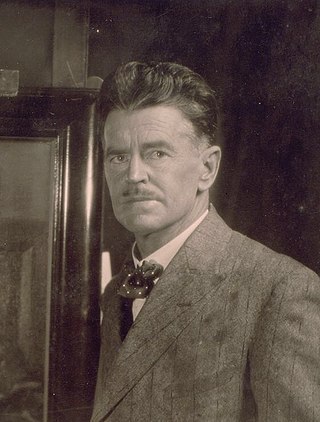
William Beckwith McInnes was an Australian portrait painter, winner of the Archibald Prize seven times for his traditional style paintings. He was acting-director at the National Gallery of Victoria and an instructor in its art school.
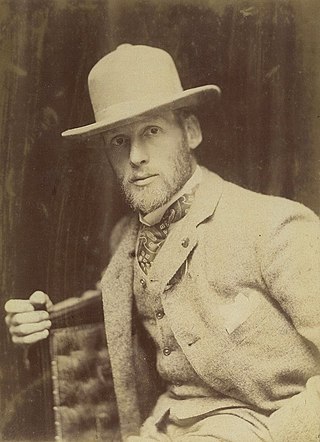
Thomas William Roberts was an English-born Australian artist and a key member of the Heidelberg School art movement, also known as Australian impressionism.
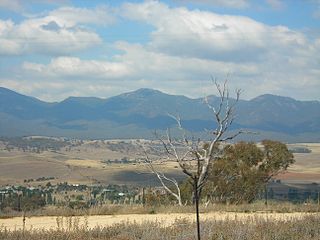
Michelago is a village in the Monaro region of New South Wales, Australia. The village is in the Snowy Monaro Regional Council local government area, 54 kilometres (34 mi) south of Canberra on the Monaro Highway. It was founded in the 1820s, on the main route from Sydney to the Snowy Mountains. Its name is also applied to the surrounding area, for postal and statistical purposes. At the 2016 census, Michelago had a population of 642.

George Washington Thomas Lambert was an Australian artist, known principally for portrait painting and as a war artist during the First World War.

Frederick Ronald Williams was an Australian painter and printmaker. He was one of Australia’s most important artists, and one of the twentieth century's major landscapists. He had more than seventy solo exhibitions during his career in Australian galleries, as well as the exhibition Fred Williams - Landscapes of a Continent at the Museum of Modern Art in New York in 1977.

Clara Southern was an Australian artist associated with the Heidelberg School, also known as Australian Impressionism. She was active between the years 1883 and her death in 1940. Physically, Southern was tall with reddish fair hair, and was nicknamed 'Panther' because of her lithe beauty.
Mildred Anne Butler was an Irish artist, who worked in watercolour and oil of landscape, genre and animal subjects. Butler was born and spent most of her life in Kilmurry, Thomastown, County Kilkenny and was associated with the Newlyn School of painters.
John Wick was a Dutch baroque painter, best known for his works on military subjects. There are still over 150 of his works known to be in existence.
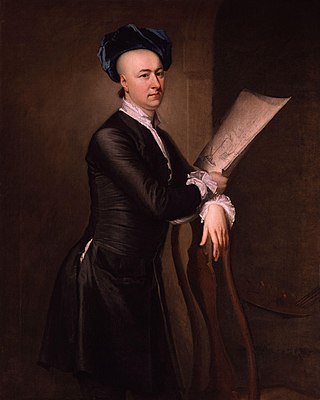
Samuel Scott was a British landscape painter known for his riverside scenes and seascapes.

Shearing the Rams is an 1890 painting by Australian artist Tom Roberts. It depicts sheep shearers plying their trade in a timber shearing shed. Distinctly Australian in character, the painting is a celebration of pastoral life and work, especially "strong, masculine labour", and recognises the role that the wool industry played in the development of the country.
Sir Herbert James Gunn RA RP was a Scottish landscape and portrait painter.

A Sergeant of the Light Horse is a 1920 painting by Australian artist George Washington Lambert. The portrait depicts an Australian soldier in Palestine during World War I. The National Gallery of Victoria states that the work is "recognised as an image that captured the spirit and character of the Australian soldier".

Florence Ada Fuller was a South African-born Australian artist. Originally from Port Elizabeth, Fuller migrated as a child to Melbourne with her family. There she trained with her uncle Robert Hawker Dowling and teacher Jane Sutherland and took classes at the National Gallery of Victoria Art School, becoming a professional artist in the late 1880s. In 1892 she left Australia, travelling first to South Africa, where she met and painted for Cecil Rhodes, and then on to Europe. She lived and studied there for the subsequent decade, except for a return to South Africa in 1899 to paint a portrait of Rhodes. Between 1895 and 1904 her works were exhibited at the Paris Salon and London's Royal Academy.
Across the Black Soil Plains is a 1899 painting by Australian artist George Washington Lambert. The landscape depicts a team of draft horses pulling a wagon heavily laden with wool bales. Lambert's painting was awarded the Wynne Prize in 1899.

Weighing the Fleece is a 1921 painting by Australian artist George Washington Lambert. It is part of the collection of the National Gallery of Australia in Canberra.
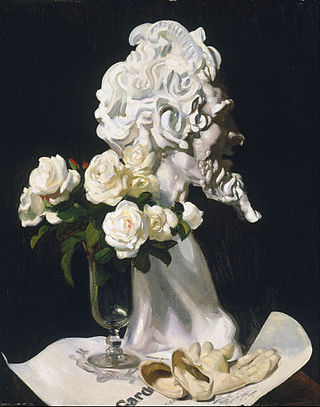
Pan Is Dead (Still Life) is a 1911 still life painting by Australian artist George Washington Lambert. The painting depicts "a sculpted head of Pan beside white gloves and a glass vase filled with white roses". Lambert created the bust of Pan as part of a costume for a character he played in a tableau vivant, The awakening of Pan, created in 1909 by the wife of the artist Philip Connard.
Lambert constructed a conceit in which he played upon the difference between how things appear on the surface of the canvas and how they are in reality. He abrogated the difference between the solid bust of Pan and the bunch of fragile white roses in the glass vase beside it by making the sculpted curls in Pan's hair resemble roses and by using sharply defined edges to 'sculpt' the flowers.

Chesham Street is a 1910 oil-on-canvas painting by Australian artist George Washington Lambert. The work depicts a doctor performing an auscultation on a man with his shirt lifted and torso exposed. The work was painted at the Rossetti Studios on Flood Street in London. The painting is one of a set of "puzzle pictures" painted by Lambert between 1910 and 1914. These paintings are said to "appear to have a meaning and yet are not strictly narrative; they invite the viewer to provide their own interpretation.".
The man sits boldly in front of the viewer, holding up his shirt and revealing his entire torso. His head is held high, his lips are closed and he looks down at the viewer, seeming somewhat superior. His pale flesh, with the play of light on it, gleams against the dark surroundings.

The convex mirror is a c 1916 oil with pencil on wood panel painting by Australian artist George Washington Lambert.

Self-portrait with gladioli is a 1922 oil-on-canvas painting by Australian artist George Washington Lambert. The painting, a self-portrait, depicts Lambert in a brown velvet gown, wearing a purple scarf with a vase holding a gladiolus in front of him.
















